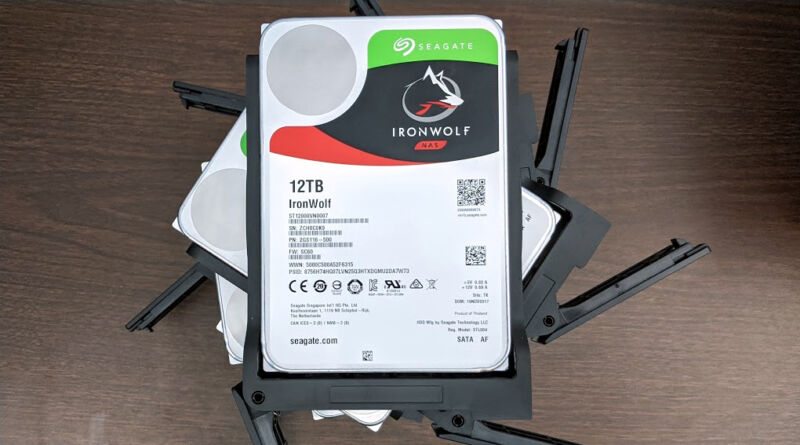
Enlarge / Behold—96TB of storage stacked on a workbench in an unwieldy, eight-high spiral. Don't try this at home, kids; photography and system administration don't mix very well. (credit: Jim Salter)
One of the first big challenges neophyte sysadmins and data hoarding enthusiasts face is how to store more than a single disk worth of data. The short—and traditional—answer here is RAID (a Redundant Array of Inexpensive Disks), but even then there are many different RAID topologies to choose from.
Most people who implement RAID expect to get extra performance, as well as extra storage, out of all those disks. Those expectations aren't always rooted very firmly in the real world, unfortunately. But since we're all home with time for some technical projects, we hope to shed some light on how to plan for storage performance—not just the total number of gibibytes (GB) you can cram into an array.
A quick note here: Although readers will be interested in the raw numbers, we urge a stronger focus on how they relate to one another. All of our charts relate the performance of RAID arrays at sizes from two to eight disks to the performance of a single disk. If you change the model of disk, your raw numbers will change accordingly—but the relation to a single disk's performance will not for the most part.
Read 86 remaining paragraphs | Comments
from Biz & IT – Ars Technica https://ift.tt/2VawdbM
via IFTTT

Post a Comment